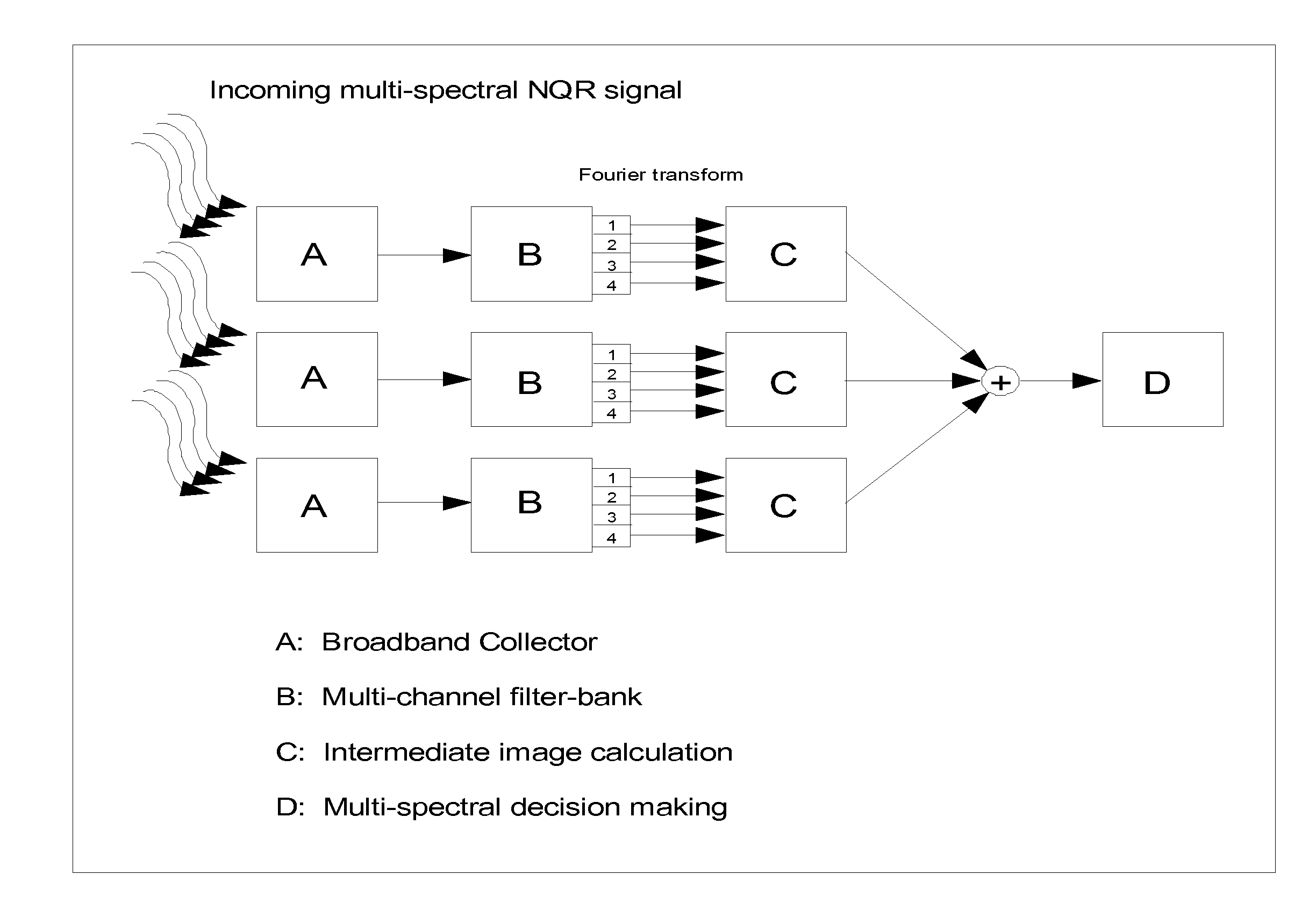Noise Reduction Apparatus, Systems, and Methods
a technology of noise reduction and data acquisition, applied in the field of noise reduction in data acquisition systems, can solve the problems of significant noise component, incremental effect of noise reduction methods such as signal averaging, at the cost of scan time or spatial resolution, etc., and achieve the effect of reducing noise, increasing signal-to-noise ratio, and reducing nois
- Summary
- Abstract
- Description
- Claims
- Application Information
AI Technical Summary
Benefits of technology
Problems solved by technology
Method used
Image
Examples
first embodiment
[0218]Several practical embodiments of a multi-channel CRISP NQR system are described in this section. In the first embodiment, multiple RF coils are each tuned to a distinct frequency range encompassing one or more target spectral lines. Each RF coil output is attached to a multi-channel CRISP filter-bank. This is similar to a combination of the embodiments of FIG. 2B and FIG. 2C, and is described in FIG. 7.
[0219]As shown in FIG. 7, multiple broadband RF coils receive a NQR signal. Each broadband RF coil encompasses a number of target NQR spectral lines. These lines are resolved using CRISP technology (frequency filter-bank version). In turn, calculation of intermediate images and subsequent summation creates the final image or signal profile. In one embodiment, resolved spectral peaks are then characterized according to the known distributions of the spectral lines for target substances.
second embodiment
[0220]In the second embodiment, a single broadband RF coil is tuned to a wide frequency range including many target spectral lines, and it is attached to a multi-channel CRISP filter-bank. This is similar to the CRISP embodiment described in FIG. 2B. In this case, narrowband excitation of the target in a sweeping fashion, either continuous or pulsed, is integrated with the use of a multi-channel CRISP frequency filter-bank system. In either embodiment, low noise RF coils, e.g. superconducting RF coils, low temperature RF coils may be used. Because of the breadth of the target spectral lines, it may be more optimal not to use contiguous spectral coverage with the narrowband CRISP data channels, but instead be more selective in the ranges that are covered by either the physical coils or by the frequency filter-bank.
Step 2: Channel Specific Data Sampling
[0221]Data sampling is performed separately for each CRISP data channel either with a dedicated or a multiplexed A / D converter. Becaus...
PUM
 Login to View More
Login to View More Abstract
Description
Claims
Application Information
 Login to View More
Login to View More - R&D
- Intellectual Property
- Life Sciences
- Materials
- Tech Scout
- Unparalleled Data Quality
- Higher Quality Content
- 60% Fewer Hallucinations
Browse by: Latest US Patents, China's latest patents, Technical Efficacy Thesaurus, Application Domain, Technology Topic, Popular Technical Reports.
© 2025 PatSnap. All rights reserved.Legal|Privacy policy|Modern Slavery Act Transparency Statement|Sitemap|About US| Contact US: help@patsnap.com



